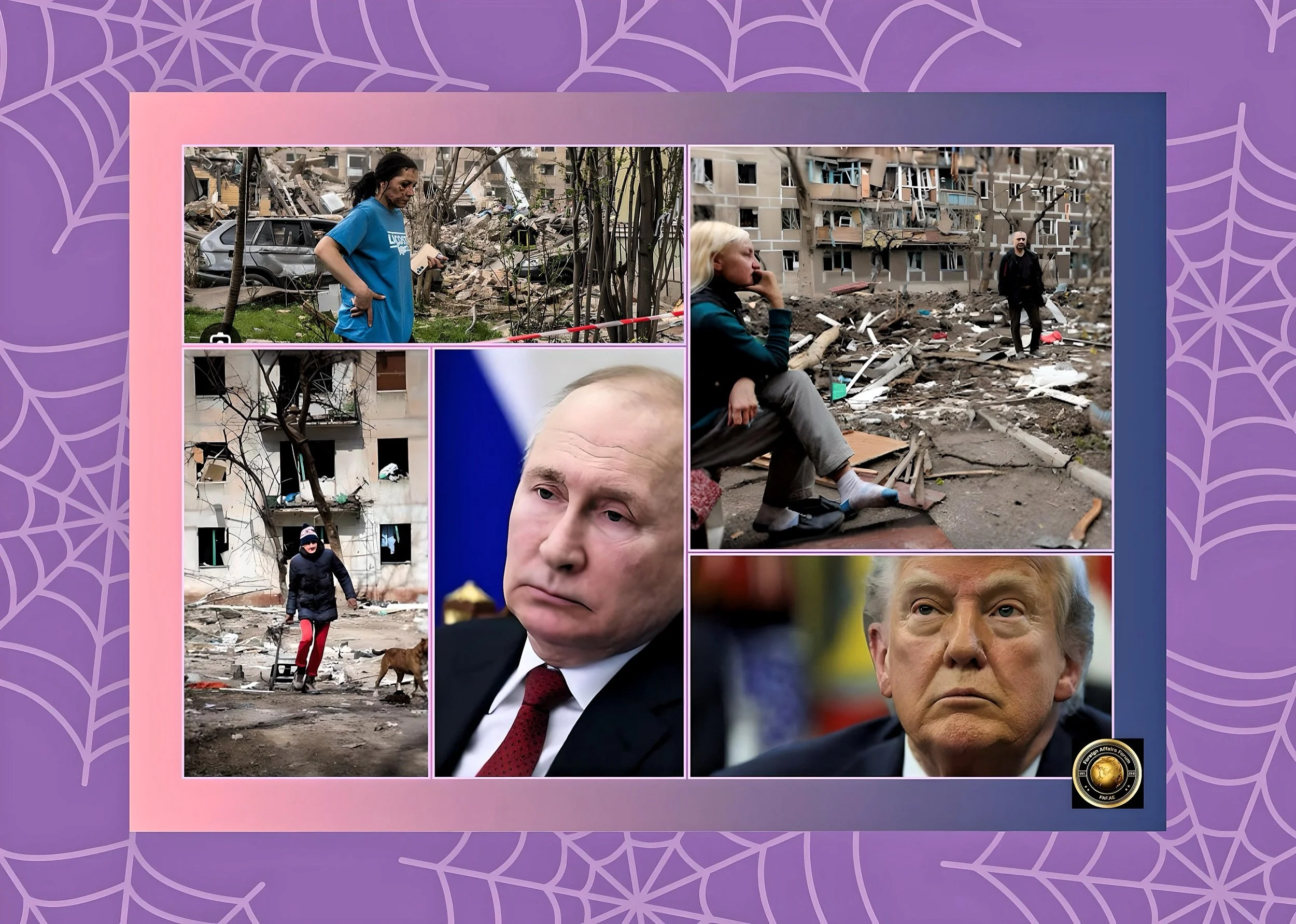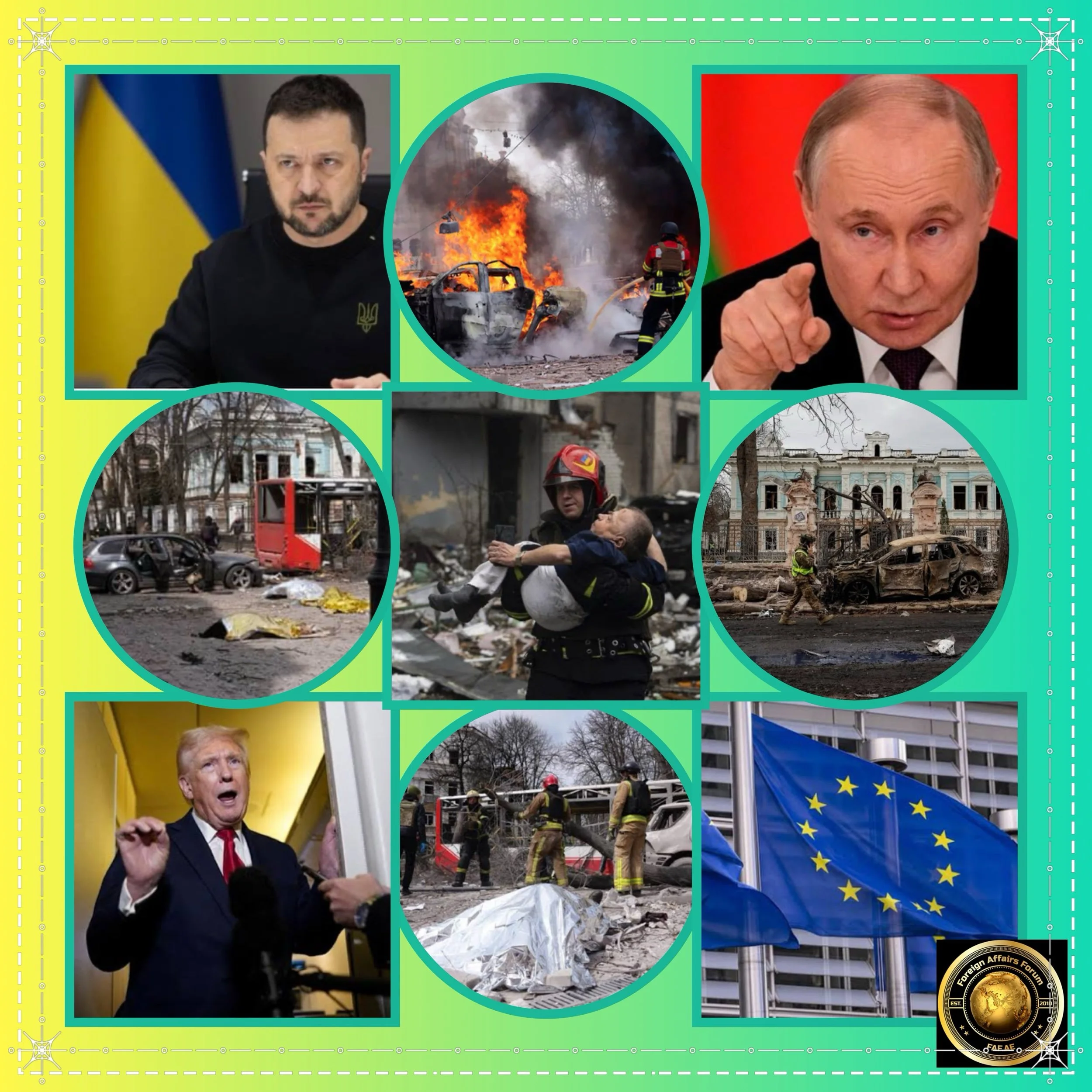Putin is unstoppable- Russia Pummels Kyiv. Trump with no options
Introduction
Russia launched a devastating missile and drone attack on Kyiv, Ukraine, on April 24, 2025, killing at least 12 people and injuring around 90 others, including six children.
This deadly assault, described as the most severe attack on the Ukrainian capital in nearly a year, prompted US President Donald Trump to issue an unusual public rebuke to Russian President Vladimir Putin.
The attack occurred just hours after Trump had criticized Ukrainian President Volodymyr Zelensky for his stance on peace negotiations. As rescue operations concluded, the human toll of this bombardment underscored the ongoing brutality of the conflict while highlighting shifting diplomatic dynamics between the key international players involved.
The Devastating Attack on Kyiv
Scale and Nature of the Bombardment
In the early hours of April 24, Russia conducted a large-scale attack on Kyiv using both missiles and drones.
According to Ukrainian officials, the assault involved approximately 70 missiles, including ballistic types, and nearly 150 attack drones targeting various cities across Ukraine, with Kyiv experiencing the most severe impact.
The bombardment began around 1:00 a.m. local time when a series of explosions rocked the capital, with additional explosions reported around 4:00 a.m.. Air raid sirens had alerted residents to seek shelter, though many were still caught in the destruction.
The attack triggered an air raid alert that remained in effect in the capital for six hours. Emergency services reported that 40 fires had broken out across the city due to the strikes.
Rescue operations were conducted at 13 locations throughout Kyiv, with climbing specialists and sniffer dogs deployed to search through the debris.
The most severely affected area was identified as the western Satoshskyi district, although officials reported that five additional districts were also impacted during the assault.
The assault forced more than 16,000 people to seek refuge in Kyiv’s subway system as explosions shook buildings throughout the city.
As dawn broke, plumes of smoke rose above the city skyline, providing visual evidence of the extensive damage caused by the overnight bombardment.
Casualties and Structural Damage
The official death toll from the attack stands at 12 people, with approximately 90 others injured, including six children and a pregnant woman.
Of those injured, 31 remained hospitalized the day after the attack, according to Kyiv Mayor Vitali Klitschko.
Ukrainian Interior Minister Ihor Klymenko reported that “phone calls can be heard from the wreckage,” indicating people were trapped beneath the debris.
The bombardment caused significant structural damage across Kyiv. One missile struck a two-story apartment building containing 12 units, destroying it.
A five-story building nearby lost all its windows, with surrounding structures suffering blown-out windows and demolished balconies. No apparent military targets were visible near the residential areas that were hit.
Rescue teams worked tirelessly through the debris of collapsed structures and battled fires in residential buildings throughout the night.
Social media pictures showed rescue crews utilizing floodlights as they cautiously navigated through rubble and climbed ladders to access damaged building facades. Police conducted door-to-door checks to determine whether residents were safe.
Eyewitness Accounts
The human impact of the attack is vividly captured in firsthand accounts from survivors.
Yevhenii Plakhotnikov, 40, who lived across the street from a two-story apartment building struck by a missile, described waking to air raid alarms and the buzzing sound of drones. “While putting on the second sneaker, I heard the first explosion,” he recalled. “Then I heard something heavy fall.
All my interior doors were torn in half. I opened the door and saw shrapnel flying.”
Tetyana Hrynenko, 58, whose apartment was next to a flattened building, stood on the street, covering her mouth with her hands as she looked up at her ruined home. “The most important thing is that we are alive,” she said, recounting hearing two explosions, seeing clouds of dust, and smelling burning. “People were shouting and asking for help.
I looked out into the stairwell, and there were no stairs. And I live on the fifth floor.”
Maria Rumiantseva, a 40-year-old resident of a damaged building, told the Kyiv Independent: “We were at home and there were explosions. Then I heard the Shahid. We just went out into the corridor, went to open the door, and that was it — an explosion.”
Trump’s Response and Political Context
Trump’s Direct Rebuke to Putin
In a surprising development, President Donald Trump issued a rare public criticism of Russian President Vladimir Putin following the attack on Kyiv.
On his Truth Social platform, Trump wrote: “I am not happy with the Russian strikes on KYIV. It's not necessary, and it's terrible timing. Vladimir, STOP! Five thousand soldiers a week are dying. Let's get the Peace Deal DONE!”
This direct message to Putin represents an unusual departure from Trump’s typically more measured approach toward the Russian leader.
The phrase “Vladimir, STOP!” quickly gained traction online, with many social media users commenting on the unprecedented nature of the message.
Some online commentators pointed out that Trump had previously claimed he would resolve the conflict in Ukraine on his first day in office, yet his approach had now been reduced to simply appealing to Putin to stop.
The rebuke demonstrates the unpredictable nature of the Trump administration’s stance on foreign affairs, particularly regarding the Russia-Ukraine conflict.
While explicitly criticizing Putin’s actions, Trump’s message also emphasized his desire for a peace deal to be reached, maintaining his focus on ending the conflict.
Previous Criticism of Zelensky
The timing of Trump’s rebuke to Putin is particularly notable as it came just hours after he had criticized Ukrainian President Volodymyr Zelensky.
On April 23, Trump expressed frustration with Zelensky for rejecting any recognition of Russia’s occupation of Crimea, warning that such “inflammatory” remarks could derail efforts to end the war with Russia.
“This statement is very harmful to the peace negotiations with Russia,” Trump posted on Truth Social, adding that “Crimea was lost years ago and is not even a point of discussion.”
Zelensky has consistently maintained that he will not acknowledge Russian control over Crimea, a region illegally annexed by Russia in 2014.
Following this annexation, Russian President Vladimir Putin launched a full-scale invasion of Ukraine in 2022, resulting in Moscow’s control over nearly 20% of Ukrainian territory.
Peace Negotiations Context
The attack on Kyiv occurred amid stalled peace negotiations between Ukraine and Russia.
According to the Kyiv Independent, the mass attack came just hours after the Kremlin demanded Ukraine’s full recognition of Russia’s claim over four Ukrainian oblasts it partially occupies, neutral status for Ukraine and an end to all Western military support.
Ukrainian President Zelensky stated that Ukraine does not “see strong pressure on Russia now” nor new sanctions against Moscow, despite its unwillingness to progress in peace talks. “We believe that with greater pressure on the Russian Federation, we will be able to bring our sides closer,” he said.
Ukrainian officials have suggested that Russia has intensified attacks against civilians since the start of US-led peace negotiations.
The woman whose apartment suffered significant damage in the recent Kyiv attack shared with the BBC that she had fled her hometown in eastern Ukraine twice, an area now under Russian occupation.
She firmly responded no when asked if Zelensky should concede those territories to achieve a peace agreement, stating it would contradict “our constitution.”
The Human Toll and Broader Impact
Tragic Stories from the Rubble
The devastating impact of the attack continued to unfold in the hours and days following the bombardment.
One particularly tragic story emerged from the ruins: dozens of classmates and friends of 17-year-old Danylo Khudya (known as Danya) held a vigil at the site where he was missing under the rubble, along with his parents.
As they watched emergency workers dig through the debris, many of the teenagers, including Danya’s girlfriend, “sobbed inconsolably.”
By Thursday evening, the death toll had climbed as emergency workers recovered more bodies from the rubble.
Just after 5 p.m. local time, an emergency worker approached the group of teenagers and asked for any identifying marks of Danya, as workers had spotted a teenage boy’s body in the debris.
After the teenagers provided this information, the worker delivered the devastating news: “Your friend is not with us anymore.” The teenagers “burst into tears and hugged each other” before departing, “defeated.”
Impact on Civilian Mental and Physical Health
The constant threat of aerial attacks has taken a significant toll on the civilian population of Ukraine.
According to Thomas Marchese, Doctors Without Borders program director in Ukraine, “Right now, our staff—like millions of others—face almost nightly bombing raids.
Last night, some of our colleagues spent the night in metro stations; others had no choice but to wake their children and shelter at home as best they could while explosions shook the ground and rattled windows. No one is safe, people are exhausted, and many live in fear.”
The psychological impact of living under constant threat has manifested in physical health problems.
Doctors Without Borders mobile clinics have “seen a rise in cases of heart attacks and strokes—conditions directly linked to prolonged stress.” Marchese noted, “In Ukraine, no part of daily life is untouched by the war.
People can be hit while commuting, buying bread, or dropping off their children at kindergarten. There’s no warning, no safe place—just seconds between everyday life and extreme violence.”
Those affected by the strike expressed complex emotions about the ongoing conflict. “Yesterday, we were very disappointed that the negotiations hadn’t moved forward, and then overnight, it hit me directly,” said Hrynenko while surveying her damaged apartment. “I am disappointed. Exhausted.”
Plakhotnikov captured the impossible dilemma facing many Ukrainians when he said, “There’s no point in continuing the war, but it’s also impossible to stop.”
Pattern of Attacks on Civilian Infrastructure
The attack on Kyiv is part of a broader pattern of bombardments throughout Ukraine in which attacks on residential buildings, hospitals, and schools occur daily.
According to Doctors Without Borders, around 2,000 medical facilities have been damaged or destroyed since the war in Ukraine escalated in 2022.
On April 5, 2025, MSF ambulance teams responded to a strike in Kryvyi Rih that killed 20 people, including nine children.
One survivor referred by MSF paramedics was just 7 years old and suffered a fractured hip, hemorrhagic shock, and shrapnel wounds.
On April 23, the day before the Kyiv attack, a drone strike by Russian forces hit a bus in Marhanets in the Dnipro region, reportedly killing nine people and wounding 50.
The April 24 attack on Kyiv is described as the deadliest on the Ukrainian capital since July 2024, when Russian missiles destroyed a children’s hospital and killed more than 20 people throughout the city.
The persistent targeting of civilian infrastructure continues to raise serious concerns about violations of international humanitarian law and the protection of non-combatants in conflict zones.
Conclusion
The April 24, 2025, Russian attack on Kyiv represents one of the deadliest strikes on the Ukrainian capital in nearly a year, resulting in at least 12 fatalities and approximately 90 injuries.
The scale and brutality of this attack on civilian targets prompted an unusual direct rebuke from US President Donald Trump to Russian President Vladimir Putin, highlighting the complex diplomatic landscape surrounding the ongoing conflict.
As rescue operations concluded and the full extent of the destruction became clear, the human toll of this attack served as a sobering reminder of the devastating impact of the war on ordinary Ukrainian citizens.
While peace negotiations continue to stall, civilians in Ukraine remain caught in the crossfire, facing both the immediate dangers of missile and drone attacks and the long-term psychological and physical health consequences of living under constant threat.
The international community’s response to this attack, particularly President Trump’s public criticism of Putin following his criticism of President Zelensky, may signal shifting dynamics in the diplomatic efforts to resolve the conflict.
However, for the residents of Kyiv and other Ukrainian cities, the immediate reality remains one of destruction, loss, and an uncertain future as the war continues with no clear end in sight.






